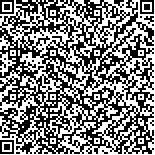| 引用本文: |
梁永,唐红宇,王爱民,王家祺,曹天然,颜建辉,欧阳松.桥接治疗急性缺血性脑卒中患者的血管再通率及远期神经功能恢复分析[J].湖南中医药大学学报,2019,39(1):94-98[点击复制] |
|
| |
|
|
| 本文已被:浏览 2967次 下载 985次 |
| 桥接治疗急性缺血性脑卒中患者的血管再通率及远期神经功能恢复分析 |
| 梁永,唐红宇,王爱民,王家祺,曹天然,颜建辉,欧阳松 |
| (长沙市第一医院神经内科, 湖南 长沙 410000) |
| 摘要: |
| 目的 探讨重组组织型纤溶酶原激活物(rtPA)静脉溶栓联合血管内介入治疗(即桥接治疗法)对急性缺血性脑卒中患者的治疗效果。方法 选取我院(2015年1月-2018年1月)收治的100例急性缺血性脑卒中患者进行回顾性分析,根据治疗方法分为观察组47例(桥接治疗法)、对照组53例(rtPA静脉溶栓疗法),对比两组治疗后的血管再通率、神经功能恢复情况。结果 观察组前循环梗死血管(颈内动脉、大脑前动脉、大脑中动脉)再通率91.49%,对照组前循环梗死血管再通率50.94%,两组比较差异具有统计学意义(P<0.01);观察组治疗14 d、治疗28 d、治疗3个月,神经功能缺损(NIHSS)评分均显著的低于对照组(P<0.01);根据mRS标准,观察组的预后良好87.23%,对照组预后良好52.83%,两组比较差异具有统计学意义(P<0.01);观察组的并发症发生率8.51%,对照组并发症发生率16.98%,两组比较差异无统计学意义(P>0.05)。结论 桥接治疗对缺血性脑卒中患者的效果优于rtPA静脉溶栓疗法,对于患者远期神经功能恢复具有显著效果。 |
| 关键词: 急性缺血性脑卒中 重组组织型纤溶酶原激活物 静脉溶栓 桥接治疗 |
| DOI:10.3969/j.issn.1674-070X.2019.01.022 |
| 投稿时间:2018-10-08 |
| 基金项目:湖南省卫计委课题(B2016240);湖南省自然科学基金(2018JJ6129)。 |
|
| An Analysis of Revascularization Rate and Long-Term Neurological Function Recovery in Patients with Acute Ischemic Stroke Treated by Bridging Therapy |
| LIANG Yong,TANG Hongyu,WANG Aimin,WANG Jiaqi,CAO Tianran,YAN Jianhui,OUYANG Song |
| (Department of Neurology, Changsha First Hospital, Changsha, Hunan 410000, China) |
| Abstract: |
| Objective To investigate the therapeutic effect of intravenous thrombolysis with recombinant tissue plasminogen activator (rtPA) combined with endovascular therapy (bridging therapy) in patients with acute ischemic stroke.Methods One hundred patients with acute ischemic stroke admitted to our hospital from January 2015 to January 2018 were analyzed retrospectively. According to the therapies received, 47 cases were assigned to observation group (treated with bridging therapy), and 53 patients to control group (treated with rtPA thrombolytic therapy). The revascularization rate and recovery of neurological function after treatment were compared between the two groups.Results There was a significant difference in the revascularization rate of anterior circulation infarction (internal carotid artery, anterior cerebral artery, and middle cerebral artery) between the observation group and the control group (P<0.01). The National Institutes of Health Stroke Scale score in the observation group was significantly lower than that in the control group on days 14 and 28 and at month 3 of treatment (P<0.01). According to the modified Rankin Scale standard, the good prognosis rate was significantly different between the observation group and the control group (P<0.01). The complication rates in the observation group and the control group were 8.51% and 16.98%, respectively, with no significant difference (P>0.05).Conclusion Bridging therapy has a superior clinical effect to intravenous thrombolysis with rtPA in patients with ischemic stroke, and it has a significant effect in promoting recovery of neurological function. |
| Key words: acute ischemic stroke recombinant tissue plasminogen activator intravenous thrombolysis bridging therapy |
|

二维码(扫一下试试看!) |
|
|
|
|




